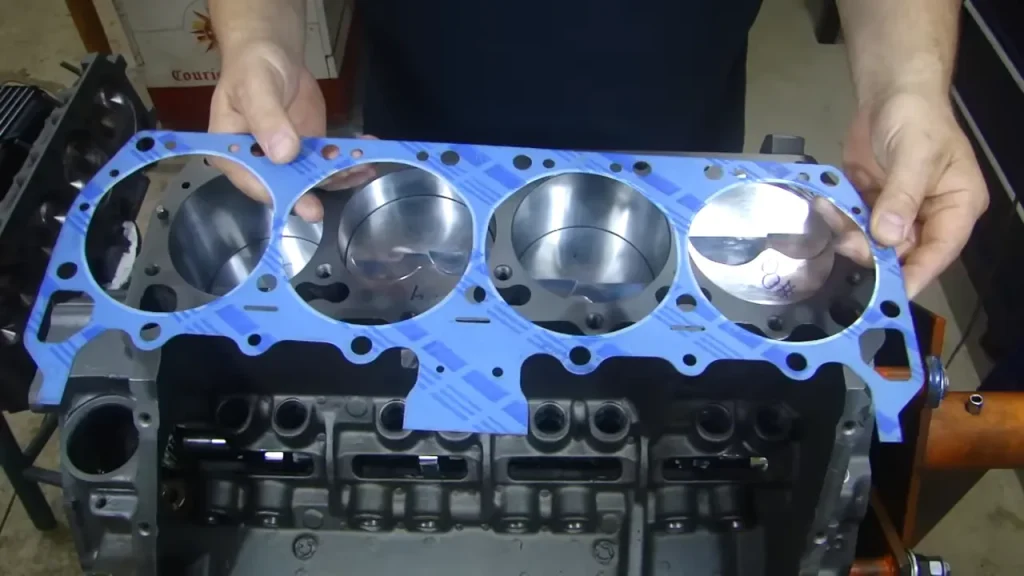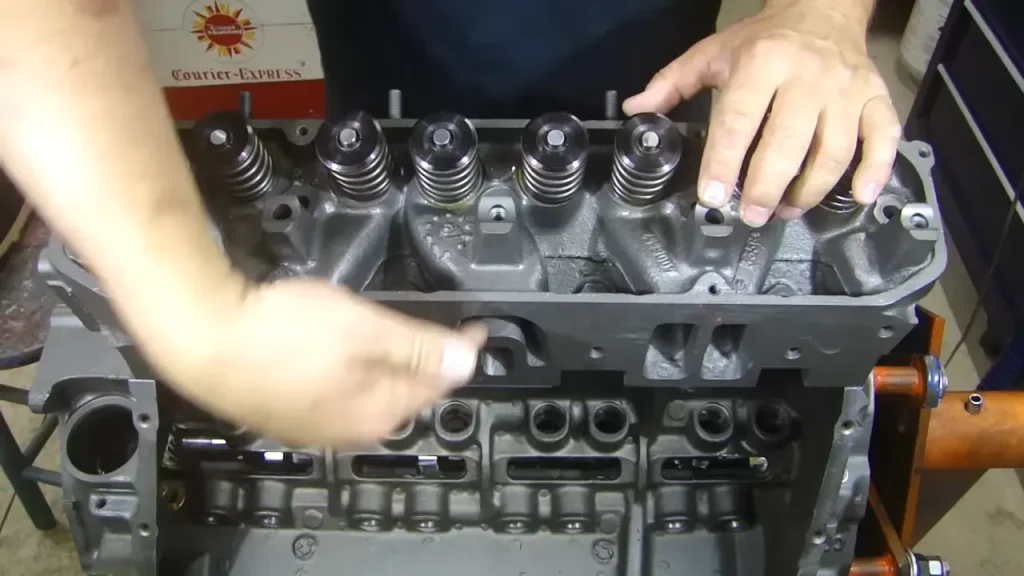What Is the Difference Between a Valve Cover Gasket And a Head Gasket (2024)
The valve cover gasket seals the valve cover to prevent oil leaks, while the head gasket seals the cylinder head to prevent coolant and compression leaks. Valve cover gasket and head gasket are two essential components in an engine.
Valve cover gaskets and head gaskets are both essential components of an internal combustion engine, but they serve different purposes and are located in distinct areas of the engine. Here’s a detailed explanation of the differences between a valve cover gasket and a head gasket:
Location
- Valve Cover Gasket: This gasket is located at the top of the engine, covering the cylinder head. It seals the gap between the valve cover and the cylinder head, preventing oil leaks.
- Head Gasket: The head gasket is situated between the engine block and the cylinder head. It seals the combustion chambers, ensuring that coolant and oil do not mix and maintaining proper compression in the cylinders.
Function
- Valve Cover Gasket: Its primary function is to prevent oil from leaking out of the valve cover. The valve cover is removable and provides access to the valves and rocker arms.
- Head Gasket: The head gasket has a more critical role. It seals the combustion chambers, maintaining the separation between the coolant passages and oil passages in the engine. It also ensures that the combustion gases are contained within the cylinders
Material and Construction
- Valve Cover Gasket: Typically made of rubber or cork, valve cover gaskets are designed to withstand the heat and pressure in the upper part of the engine.
- Head Gasket: Head gaskets are more complex and made of multi-layered steel or composite materials. They need to withstand extreme temperature and pressure variations, making them more robust than valve cover gaskets.
Criticality of Failure:
- Valve Cover Gasket: A failure in the valve cover gasket usually results in oil leaks, which, while messy, may not cause catastrophic engine damage.
- Head Gasket: A failure in the head gasket can lead to more serious consequences, such as coolant and oil mixing, loss of compression, overheating, and potential engine damage. Head gasket issues often require immediate attention and repair.
Repair Complexity:
- Valve Cover Gasket: Replacement of a valve cover gasket is generally a simpler and less expensive repair. It often involves removing the valve cover, replacing the gasket, and resealing the cover.
- Head Gasket: Repairing or replacing a head gasket is a more complex and labor-intensive process. It often requires disassembling a significant portion of the engine, which can be costly and time-consuming.

How serious is a leaking valve cover gasket?
A leaking valve cover gasket, while not as critical as some other engine issues, should not be ignored as it can lead to a variety of problems. The valve cover gasket is responsible for sealing the joint between the valve cover and the cylinder head, preventing oil leaks from the top of the engine. If this gasket is compromised, oil can escape and gradually accumulate on the exterior of the engine.
While the immediate consequence may be unsightly oil stains and a noticeable odor of burning oil, the long-term effects can be more serious. Oil leaks can result in the loss of engine oil, potentially leading to low oil levels and inadequate lubrication for critical engine components.
In turn, this may contribute to increased friction, overheating, and accelerated wear and tear on the engine. Additionally, oil dripping onto hot engine parts can pose a fire hazard. Therefore, even though a leaking valve cover gasket may not cause an immediate breakdown, addressing the issue promptly is crucial to maintaining the overall health and performance of the engine.
Regular inspection and timely replacement of a faulty valve cover gasket can help prevent more severe and costly engine problems in the future.
Is a cylinder head cover the same as a valve cover?
Yes, the terms “cylinder head cover” and “valve cover” are often used interchangeably and refer to the same component in an internal combustion engine. This cover is a protective housing located at the top of the engine, above the cylinder head.
Its primary purpose is to enclose and protect the valvetrain components, such as the valves, rocker arms, and camshafts. The cover is typically made of metal or plastic and is sealed with a gasket (commonly known as a valve cover gasket) to prevent oil leaks from the engine.
While “valve cover” is a more commonly used term, “cylinder head cover” accurately describes its function of covering and protecting the cylinder head and its internal components. In automotive terminology, you will often find both terms used interchangeably, and they refer to the same component in the context of an engine’s design and functionality.

What is another name for the valve cover gasket?
Another name commonly used for the valve cover gasket is the “rocker cover gasket.” The rocker cover is another term for the valve cover, and the gasket serves the same purpose in both cases. This gasket is a crucial component in preventing oil leaks from the top of the engine by sealing the gap between the valve cover and the cylinder head.
It is often made of rubber or cork, and its integrity is essential for maintaining proper engine function and preventing oil from escaping onto the engine and surrounding components. Whether referred to as a valve cover gasket or a rocker cover gasket, this component plays a vital role in ensuring the integrity and performance of the engine’s upper section.
What are the first signs of a blown head gasket?
The first signs of a blown head gasket can manifest in various ways, and early detection is crucial to prevent more extensive engine damage. Common symptoms include overheating, as a blown head gasket can lead to the mixing of coolant and engine oil or combustion gases.
This mixture can cause the engine to run hotter than normal. Another early sign is a noticeable loss of coolant without an apparent external leak. The coolant may be entering the combustion chambers and being burned off, resulting in a low coolant level.
White smoke coming from the exhaust, especially if it has a sweet smell, can indicate the presence of coolant in the combustion process. Engine misfires, a decrease in performance, or rough idling may occur due to the compromised seal of the head gasket affecting cylinder compression. Oil contamination with coolant or vice versa can lead to a milky or frothy substance on the oil cap or dipstick.
FAQ:
Q: What is the primary function of a valve cover gasket?
A: A valve cover gasket seals the gap between the valve cover and the cylinder head, preventing oil leaks from the top of the engine.
Q: Where is the valve cover gasket located in the engine?
A: The valve cover gasket is situated at the top of the engine, covering the cylinder head.
Q: How does a head gasket differ from a valve cover gasket?
A: While both gaskets prevent leaks, a head gasket is located between the engine block and the cylinder head, sealing the combustion chambers and maintaining proper compression.
Q: What are common materials used in valve cover gaskets?
A: Valve cover gaskets are typically made of rubber or cork, designed to withstand the heat and pressure in the upper part of the engine.
Q: Is a leaking valve cover gasket a serious issue?
A: While not as critical as some engine problems, a leaking valve cover gasket can lead to oil leaks, potentially causing long-term engine damage if left unaddressed.
Q: What are the consequences of a failed head gasket?
A: A failed head gasket can lead to coolant and oil mixing, loss of compression, overheating, and potential engine damage, requiring immediate attention.
Q: How complex is the repair of a valve cover gasket?
A: Replacement of a valve cover gasket is generally a simpler and less expensive repair, involving the removal and resealing of the valve cover.
Q: Are valve cover gaskets and rocker cover gaskets the same?
A: Yes, these terms are often used interchangeably, both referring to the gasket that seals the valve cover and prevents oil leaks.
Q: Can a leaking valve cover gasket cause engine overheating?
A: While a valve cover gasket itself may not cause overheating, the oil leaks it produces can lead to low oil levels, increased friction, and potential overheating.
Q: What are the first signs of a failing head gasket?
A: Common early signs include overheating, loss of coolant, white smoke from the exhaust, engine misfires, and a milky or frothy substance on the oil cap or dipstick.
Conclusion
To summarize, understanding the difference between a valve cover gasket and a head gasket is crucial for maintaining the performance and health of your vehicle’s engine. While both gaskets serve important functions in sealing the engine, they are located in different areas and have distinct roles.
The valve cover gasket is responsible for sealing the valve cover to prevent oil leaks, while the head gasket seals the cylinder head and engine block to prevent coolant and combustion gas leaks. Identifying any issues with these gaskets early on and addressing them promptly can help prevent more significant engine problems down the road.
Regularly checking for symptoms such as oil or coolant leaks, overheating, or loss of engine power can help you determine whether a valve cover gasket or head gasket issue may be present. By staying proactive with your vehicle’s maintenance, you can ensure that these vital gaskets are functioning correctly, extending the lifespan of your engine.
- Why Are My Car Headlights Not Bright Enough? - May 9, 2024
- How Long Can You Drive With An EVAP Leak? - May 9, 2024
- What Does B Stand for in a Car? [Full Guide] - May 9, 2024


![How To Become A Car Salesman With No Experience? [Guide 2024]](https://automhelp.com/wp-content/uploads/2023/12/How-to-buy-a-car-from-a-car-supermarket-with-Vicki-Butler-Henderson_000007202-768x432.webp)